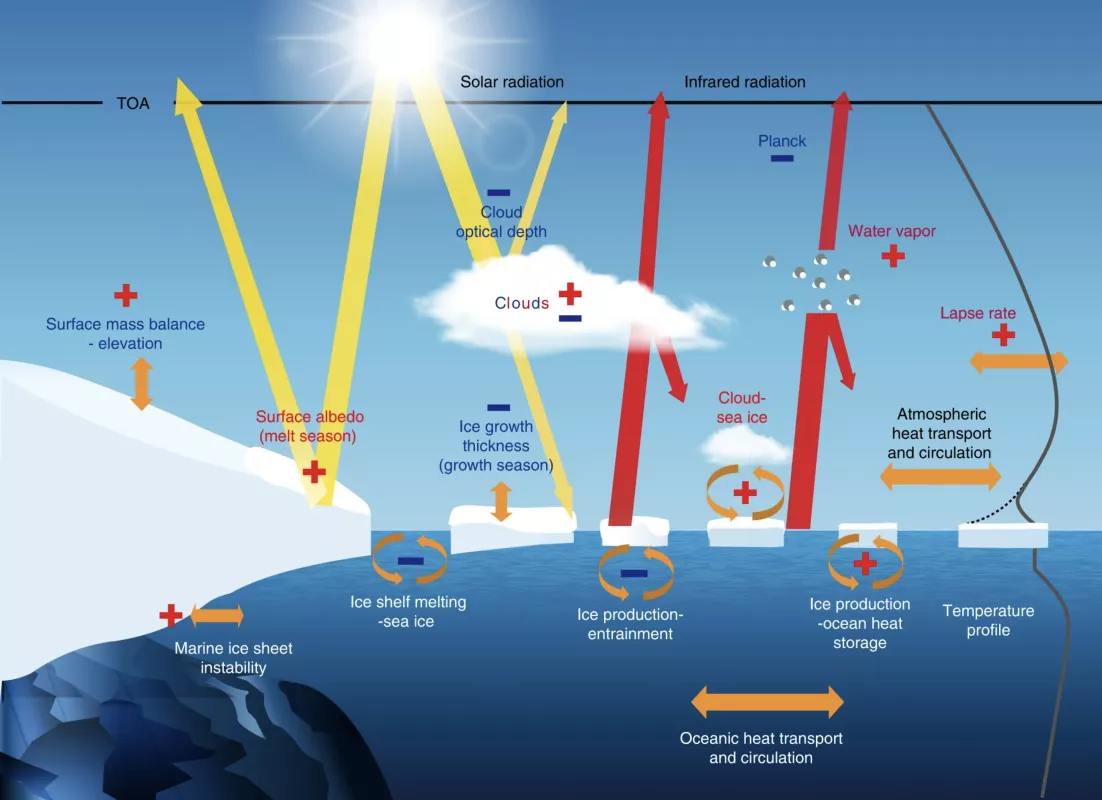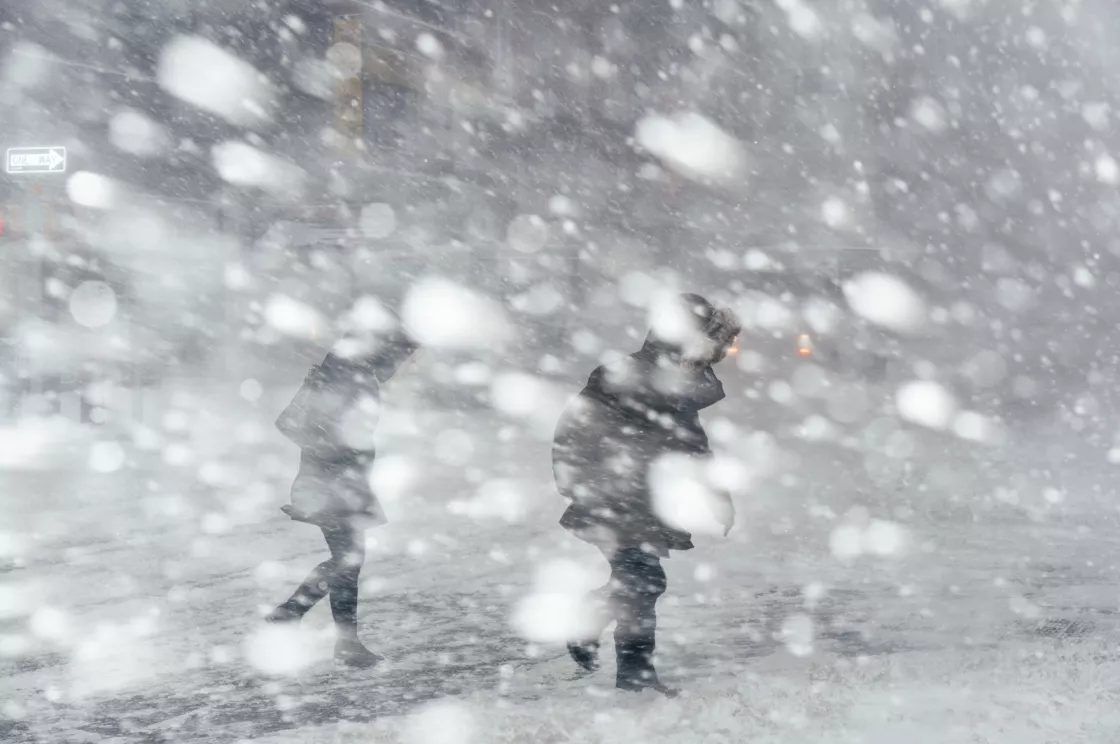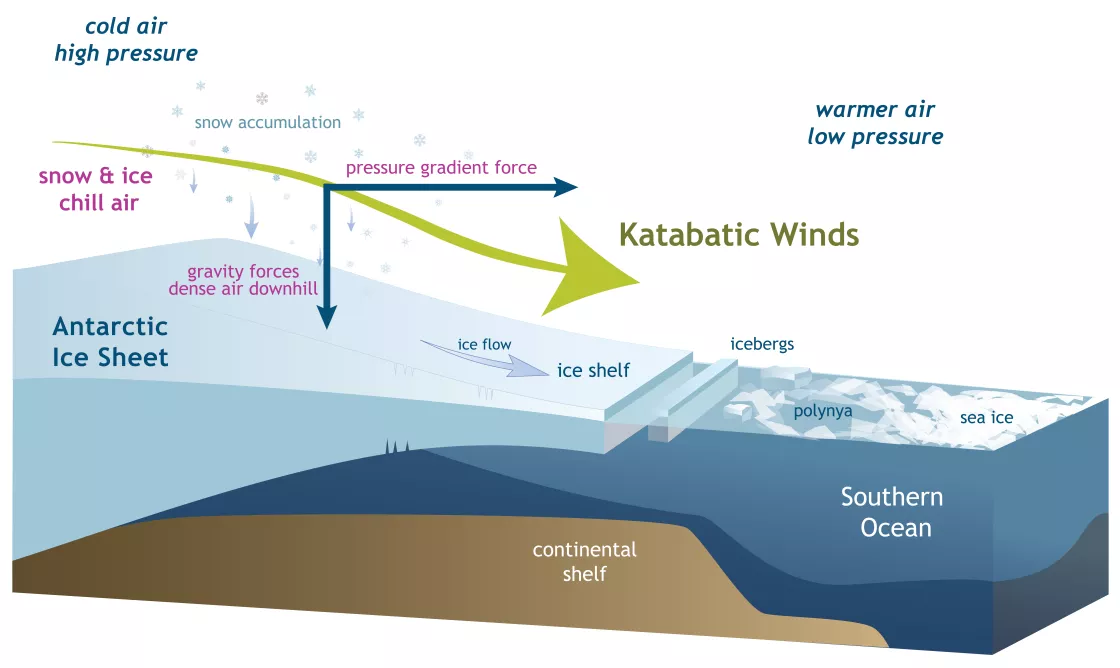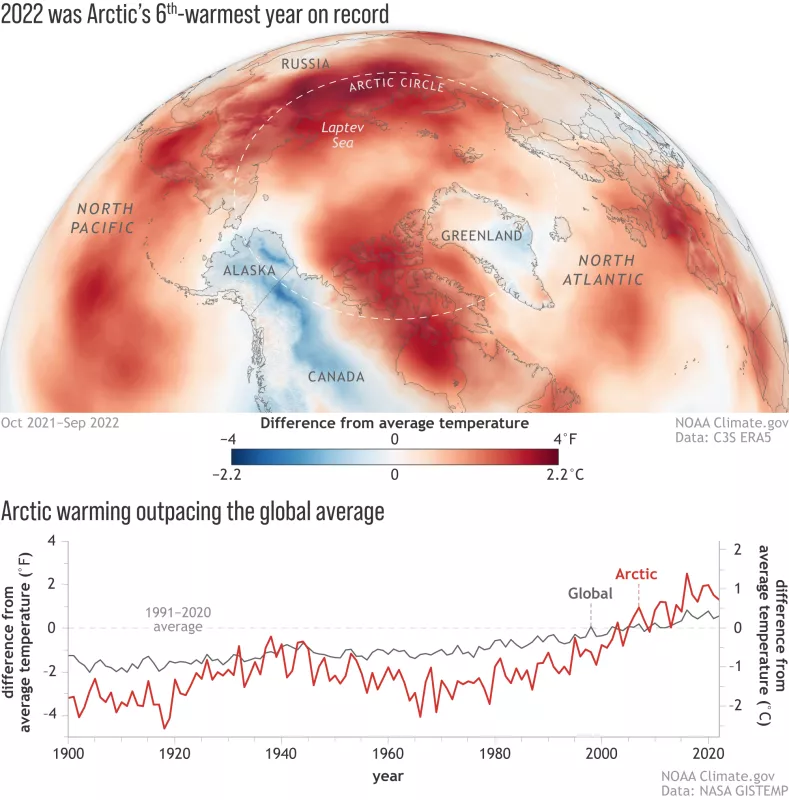Arctic Weather and Climate
Why it Matters
Effects of Arctic weather and climate
Arctic weather and climate play an important role locally, regionally, and even influence weather and climate around the world, particularly in the Northern Hemisphere.
Weather effects
When a winter snowstorm or cold snap hits temperate regions, people sometimes refer to the frigid temperatures as "Arctic." Cold air does in fact move from the Arctic into other regions, just as warm air from the south moves into the Arctic. Cyclonic (counter-clockwise rotating) storms, also referred to as low-pressure systems, tend to form at the boundaries between cold and warm air, which high in the atmosphere is associated with a jet stream. Cold air moving down from the north is experienced as a cold front. Blizzards linked to the clash between cold Arctic air and warm subtropical air can make life for people and animals difficult.
Some recent studies have argued that long-term changes in Arctic sea ice and climate may have impacts on weather patterns in other parts of the world, but the research has so far been inconclusive.
Earth’s two ice sheets, the Greenland and Antarctic Ice Sheets, have a complex relationship with cyclonic storms. Most of the moisture and energy in a storm is in the lower part of the atmosphere. As a storm approaches an ice sheet, it encounters the steep slopes of the ice sheet edges, and the air is lifted and cooled. This leads to heavy blizzards and snowfall along the ice sheet margins. By the time the air masses reach the center of the ice sheet, they are stripped of most of their moisture. As a result, snow accumulation is typically very low at the higher elevations of an ice sheet. In addition, the large bulk of the ice sheet, like a wall or tall building in the wind, can redirect storms around the ice sheet. Sometimes, storms approaching the southern tip of Greenland can be split in two. Winds blowing west to east across Greenland can also lead to storm formation in “lee” of southeast Greenland, a process known as lee-side cyclogenesis. Lee side refers to the side away from the wind.
The high-elevation center of an ice sheet also plays a role in driving a peculiar kind of local weather created by the ice sheet itself. Over the center of an ice sheet, the air is typically dry, and skies are clear. Heat radiates to space from the ice sheet surface. This chills the surface and the layer of air just above the ice, creating an inversion of cold, dense air near the ice surface with warmer air above. Gravity then pulls the dense layer of cold air downhill. As it flows down the flanks of the ice sheet, the cold air layer picks up speed. By the time it reaches the coast, hurricane-force winds, known as katabatic winds, result. In contrast to coastal storms, katabatic winds can be bone dry. Cold, dry winds over the surface can lead to ice evaporation and sublimation of snow and exposure of ice. “Blue ice” seen in many satellite images results from this process, as do the famous “dry valleys” of Antarctica, which are kept free of ice by the dry winds.
Climate effects
The Arctic region acts as a heat sink for Earth: the Arctic loses more heat to space than it absorbs from the sun's rays. By contrast, lower latitudes get more heat from the sun than they lose to space. Warm air and water move into the Arctic from tropical and temperate regions, and cold air and water moves from the Arctic into lower latitudes; the constant movement of air is reflected in day-to-day changes in weather patterns, such as cyclones, or lows. Over a whole year, and looking at the globe as a whole, the heat gain in lower latitudes gets largely balanced out, on average, by heat loss in the polar regions.
Impacts of climate change on Arctic climate and weather
Since the 1980s, the Arctic has warmed at two to four times the rate as the entire globe, depending on the region and season. This phenomenon is known as Arctic amplification. An overwhelming majority of scientists agree that this rapid warming is a signal of human-caused climate change, with loss of sea ice playing a key role.
Arctic amplification is not the only evidence of rapid climate change in the Arctic. The floating sea ice cover of the Arctic Ocean is shrinking, especially during summer. Snow cover over land in the Arctic has decreased, notably in spring, and glaciers in Alaska, Greenland, and northern Canada are retreating. The Greenland Ice Sheet is also melting and discharging more icebergs into the ocean. In addition, permanently frozen ground in the Arctic, known as permafrost, is warming and in many areas thawing so it is no longer permafrost. Scientists first started to see evidence of changes in Arctic climate in the 1980s. Since then, the changes have become much more pronounced.
Changes in the Arctic climate are important because the Arctic acts as a refrigerator for the rest of the world—it helps cool the planet. So changes in the Arctic climate could affect the climate in the lower latitudes. Changes in the Arctic also have effects that cascade through the food chain, from phytoplankton to marine mammals such as seals, walrus, whales, and polar bears.
Climate feedbacks
Researchers say that the changes in the Arctic are worrisome, because they could lead to feedback effects that lead to further warming. For instance, when the reflective white sea ice melts in summer, areas of dark open water are exposed, which can absorb more heat from the sun. That extra heat then helps melt even more ice. The loss of sea ice is known to be one of the drivers of Arctic amplification. Permafrost may also be involved in feedbacks. As permafrost thaws, plant remains, especially peat, that were frozen in the ground begin to decay. When they decay, they release carbon dioxide and methane to the atmosphere that can contribute to further warming. The changing vegetation of the Arctic also affects the brightness of the surface, which then influences warming. As the Arctic atmosphere warms, it can hold more water vapor, which is an important greenhouse gas.
Scientists have already seen evidence that positive feedbacks are occurring in the Arctic. Predicting the Arctic climate is difficult. Some of the changes in the Arctic could also be involved in feedback effects, or effects that reduce the amount of warming. For example, if high temperatures make the Arctic growing season longer, more plants can survive and take up more carbon from the air. Another example is that more open water in the Arctic Ocean results in more clouds; clouds can have a cooling or warming effect, depending on the cloud type and season. However, most evidence suggests that the positive feedback effects that hasten warming outweigh the negative feedbacks.
Scientists are studying the many factors that influence Arctic climate to help figure out how feedbacks work and what will happen in the future. Researchers are also investigating how the changes in the Arctic climate will affect climate in other parts of the world. Scientists study data collected by satellites and at ground stations and also use sophisticated computer models.



